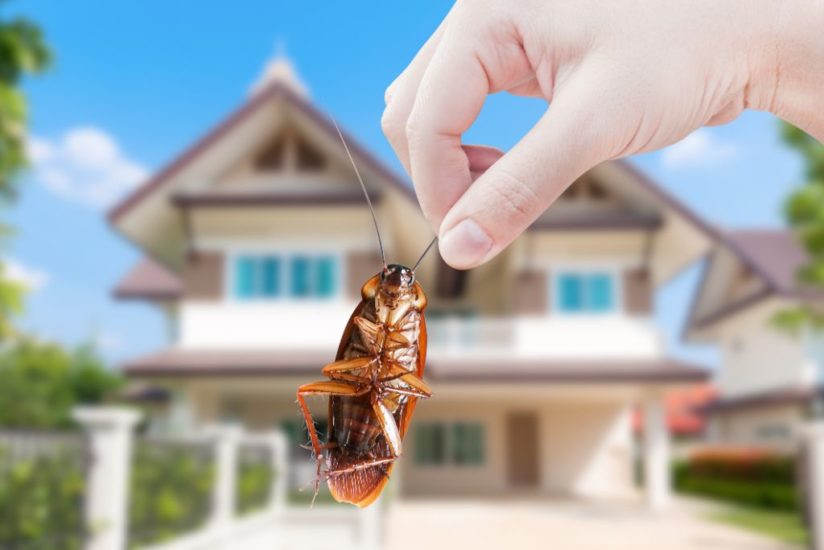The Of Pestwise
Table of ContentsThe Definitive Guide for PestwiseSome Ideas on Pestwise You Should KnowThe Definitive Guide for PestwiseSome Known Factual Statements About Pestwise All about PestwiseThe Buzz on PestwiseThe 10-Minute Rule for Pestwise

Q. Specify "integrated pest monitoring" (IPM) and listing numerous possible control strategies that might be utilized in an IPM technique. A. Integrated insect management is the incorporating of proper insect control tactics right into a single plan to minimize insects and their damages to an acceptable degree. Insect control tactics might consist of: host resistance, organic control, cultural control, mechanical control, cleanliness, and chemical (pesticide) control.
Unknown Facts About Pestwise
What can you do to keep the bugs you are attempting to control from ending up being immune to the pesticides you make use of? A. Pest resistance can be reduced by utilizing incorporated pest administration and revolving the kinds of pesticides used.
Bugs are an important hazard to the farming business, and integrated pest administration aids growers address and minimize these dangers. Integrated bug management utilizes a number of techniques in complicated, thus being a more effective service to the problem. Bug Exterminator. Specifically, eliminating aggressive chemical methods permits lessening harm to people and the setting by using all-natural and much safer choices instead
The 6-Minute Rule for Pestwise
The goal of integrated bug management is to lessen this damage and control appropriate invasion levels rather than remove all unwanted populations. This is why it is essential to recognize what steps are justified in each instance and usage aggressive ones just when other incorporated management techniques do not work. Integrated monitoring alleviates the adverse consequences of a non-IPM strategy, and the primary advantages of IPM Perks of IPM.
A right understanding of the infestation extent establishes if the issue should be addressed. are the following components of an IPM program due to the fact that it is essential to realize if the microorganisms make prospective risks and determine on the integrated administration alternatives or the certain chemical use. plan to decrease invasions by applying different agronomic strategies.
Little Known Facts About Pestwise.
if prevention was inadequate. Integrated monitoring choices in an IPM program start with much safer to much more hostile ones. For instance, target or program chemical splashing might follow hands-on elimination or capturing that hasn't assisted. Those incorporated monitoring facets aid recognize exactly how to plan and implement an IPM program step by step: Monitor your crops consistently.

Amongst others, IPM cultural techniques consist of the complying with area management methods: dirt treatment; selection of appropriate plants; crop rotation; interplanting or strip chopping; selection of planting dates; weed control; usage of catch plants. Positive soil conditions speed up plant development, and strenuous plants are extra immune to problems. Healthy plants and seeds determine successful plant development, so it is crucial to pick pest-free growing material with strong origins.
Hence, among other applications, crop rotation can be efficiently made use of as an integrated pest administration technique. Vermin spread out slower if rows of different crop types separate their host plants in intercropping or strip chopping, which is additionally used in the integrated insect administration system. On the other hand, infestations boost when plants of my review here the same crop kind or family members expand with each other.
Potato beetles can damage expanding potatoes, along with tomatoes. Growing trap plants in patches is another option for IPM intercropping. This integrated pest monitoring method recommends bring in parasites to details plants and after that regulating them with chemical or mechanical techniques. Particularly, you can grow soybeans as catch plants for Japanese beetles.
Everything about Pestwise
Barriers are regular examples of physical IPM approaches. Mature bugs or their eggs and larvae are gathered by hand and destroyed.

Department of Plant Sciences. University of Missouri. Soil solarization is a reliable integrated administration strategy to disinfect the area by heating it in an all-natural means. This integrated administration approach implies an usual way of ruining parasites by predators, parasitoids, microorganisms, and various other organic control representatives (also known as antagonistic organisms). The function of organic control in IPM is to.
A Biased View of Pestwise
With time, their population turned out to be a genuine annoyance to farmers together with native kangaroos or dingoes. The walking stick toad is one more situation illustrating integrated organic control failure in this regard when it declined to hunt the target species and came to be a parasite itself. Parasitoids establish on or within their hosts to ultimately eliminate them after developing.